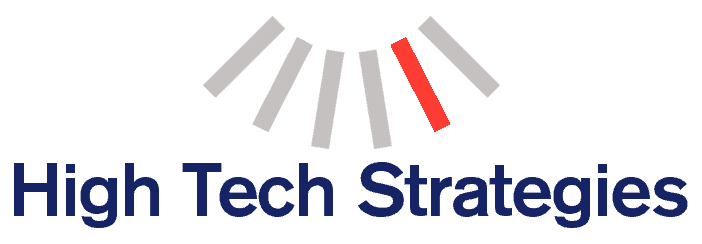In this age of artificial intelligence and natural stupidity, the concept called human-to-human interaction is alive and well and more important than ever. People still talk with other people before making important decisions…especially decisions related to buying new technologies or adopting new innovations.
The approach called market relations is a proven method of achieving a superior market position by enabling conversations between people that are based on evidence and credibility.
Market relations is a method of ensuring information about an emerging product or innovation is effectively communicated through word-of-mouth.
The goal of an effective Market Relations strategy is to overcome the fears, uncertainties and doubts that accompany any technology purchase. A Market Relations strategy is built upon an ongoing program of relationship-building and education directed at key individuals who influence the market.
Such a strategy allows a company to “wire” the market for success— companies directly interact with all members of the industry infrastructure, rather than just those who are influenced by advertising and public relations. Instead of focusing on awareness, a Market Relations strategy emphasizes education and dialogue —acceptance based on a new, informed outlook. The result is customers understand how to apply technology in their own environments. Hence, market acceptance is accelerated and the sales cycle is shortened.
Building an Effective Market Relations Strategy
To develop an effective Market Relations strategy, a company must undertake five steps:
(1) Obtain an understanding of how the target market is organized;
(2) Identify the 10 percent of those in the market who provide the most credible references;
(3) Create a “map of influence” (or industry infrastructure) for the company’s technology, product and market;
(4) Establish regular dialogues with the individuals that comprise the most influential 10 percent of the market; and
(5) Develop and execute programs that stimulate such dialogues and create word-of-mouth momentum.
The Market Relations Process has These Advantages:
(a) The source is seen as credible, particularly in comparison with advertising since the source is a person known to the recipient. Ads are known to be created by the advertiser. Today, even editorial endorsements have the “taint” of being created by public relations tactics and therefore have less credibility than word-of-mouth communication.
(b) Word-of-mouth often deals with awareness, interest, the source’s trial experience, plus product benefits all at the same time. This can move the recipient rapidly through the stages of purchase decision making and often even create a reason for purchasing, all in one “exposure.”
(c) Communication that is person-to-person appears to have a more permanent effect than most other communications channels. As a result, second only to the task of creating intangibles for new products is the challenge of finding the most effective way to generate positive and relevant word-of-mouth communications.
But because word-of-mouth communication is out of the “senders” control, the requirements for developing essential messages, positions and reasons for purchasing is substantially different than it is for, say, advertising.

It is for this reason that the initial positioning and message development effort in a technology company is so critical: the risk of failure is so high, coupled with the need for a “hardened” yet buoyant position and set of messages that will work continually.
Word-of-Mouth Content Matters
The content of word-of-mouth communication for technology products — once underway — can be enhanced and mildly diverted by the technology supplier. But because it is essentially an underground communications medium, the content of word-of-mouth cannot be substantially changed or improved, once launched. Hence the need to be correct at the start, to assure that the power of word-of-mouth will not turn negative and then increasingly build negative perceptions.
The risk of negative word-of-mouth is always present, particularly for companies where products may be incomplete at introduction. Negative word-of-mouth is substantially stronger, and works substantially faster than positive word-of-mouth. Using a word-of-mouth based strategy for a new product that does not meet expectations will provide rapid and permanent failure.
For all of its difficulties and risks, word-of-mouth has a powerfully vital attribute: it provides a method for reinforcement that is substantially better than any other medium. There is substantial research on the learning process that says, in essence, that the identical message is only effective the first three times it is received. After three exposures, the recipient becomes saturated with the particular message and interest declines rapidly. It is this finding behind the use of changing messages in advertising.
Word-of-mouth provides continually changing messages to maintain and even enhance learning. Word-of-mouth involves multiple sources (the people who talk about new products) with, by definition, multiple messages. People who are the sources of word-of-mouth customize the message to fit their circumstances and experience.
The value of this customization is that it avoids saturation by providing different messages about the same product, avoiding the saturation point of the same message, and stimulating and reinforcing continuing progress through the learning process. It is for this reason that word-of-mouth has such a powerful effect in quickly stimulating purchase behavior.
Product Launch
Product introductions that recognize this stimulating word-of-mouth effect focus on effective, customized communications to different segments of your market infrastructure primarily to assure that word-of-mouth reinforcement communications keep moving, keep evolving and keep on target. Such product introductions recognize the requirement for multiple messages to multiple segments, they understand and plan based on the infrastructure structure, for changing but consistent messages, and they appreciate the fact that word-of-mouth is outside the marketer’s control.
Measuring word-of-mouth (WOM) results is not really that hard. It only becomes difficult if you try to use quantitative methods to measure results. That’s because WOM is a “qualitative” technique. Putting numbers on word-of-mouth communication is like using an apple to check the color of an orange.
Measuring Success:
To [qualitatively] measure the results of word-of-mouth marketing, just ask and answer the following questions:
- Do prospective customers know: what makes your business different than all the others, and when you’re the best company for the job?
- Does the press accurately reflect your competitive positioning and lend 3rd party credibility to it?
- Do industry influencers understand your business strategy and support it to the press?
- Does the target market see you as a reference source expert/counselor in your industry?
- Do your business partners support your products and strategies?
- Do your salespeople (or channel partners) know where to spend their time, who to call on, and what to say?
- Are key customers actively involved in testimonial marketing and serving as references?
Use this 7-point checklist to maximize the impact of your word-of-mouth programs!


